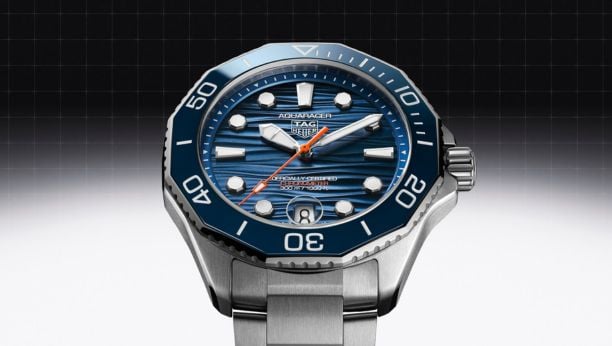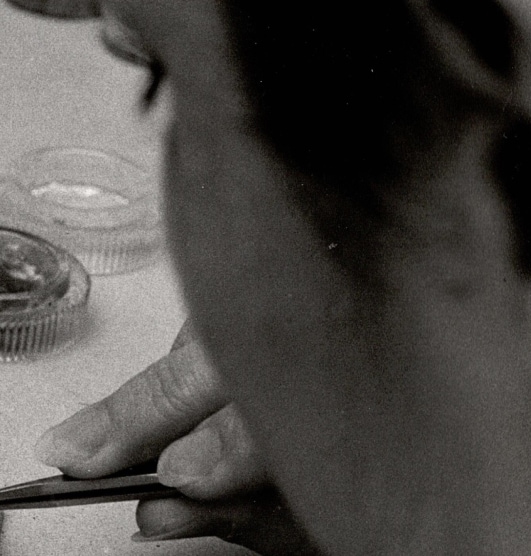VINTAGE COLLECTION
HEUER MONTREAL
Introduced in 1972, the Montreal chronographs powered by the Calibre 12 movement were Heuer’s boldest embodiment of the wild style and colors of the 1970s. This aesthetic was muted somewhat by the more restrained models introduced in 1974. Toward the end of the decade, with Heuer’s increased use of the Valjoux 7750 movement and the shift to more utilitarian styles, the Montreal was re-styled to reflect the more popular “tactical” style of chronograph.
1969 was a historic year for Heuer, with the introduction of the first automatic chronographs – the Autavia, Carrera and Monaco – but Heuer soon commenced the process of building out its range of additional chronographs that would use the newly developed Calibre 12 movement. First among these new models were the Calculator, a massive chronograph that incorporated a slide rule into its inner and outer bezels, and the Montreal, a bold model that would launch the series of Heuer chronographs capturing the fashion and spirit of the 1970s. At its launch in 1972, the Montreal exemplified the outrageous style of the decade – the case was massively oversized, with radical geometry and alternating brushed and polished finishes, and the dials, inner bezels and hands used bright, contrasting colors.
While later in the 1970s Heuer would use the name of racing venues for its chronographs (Daytona, Monza and Jarama, for example), the Montreal chronograph was named to capture the energy and cosmopolitan style of the metropolitan that was emerging as a leading city of the world. Montreal had hosted the World’s Fair in 1967 (called “Expo 1967”) and had been named to host the Summer Olympic Games in 1976. Formula One racing would only come to Montreal in 1978, when the island that had been built to host Expo 1967 was reconfigured to incorporate a race track.
The first Montreal chronographs were probably the most colourful ever launched by Heuer, and combined with its distinctive over-sized case, made for a watch that was quite different to the rest of the Heuer range.
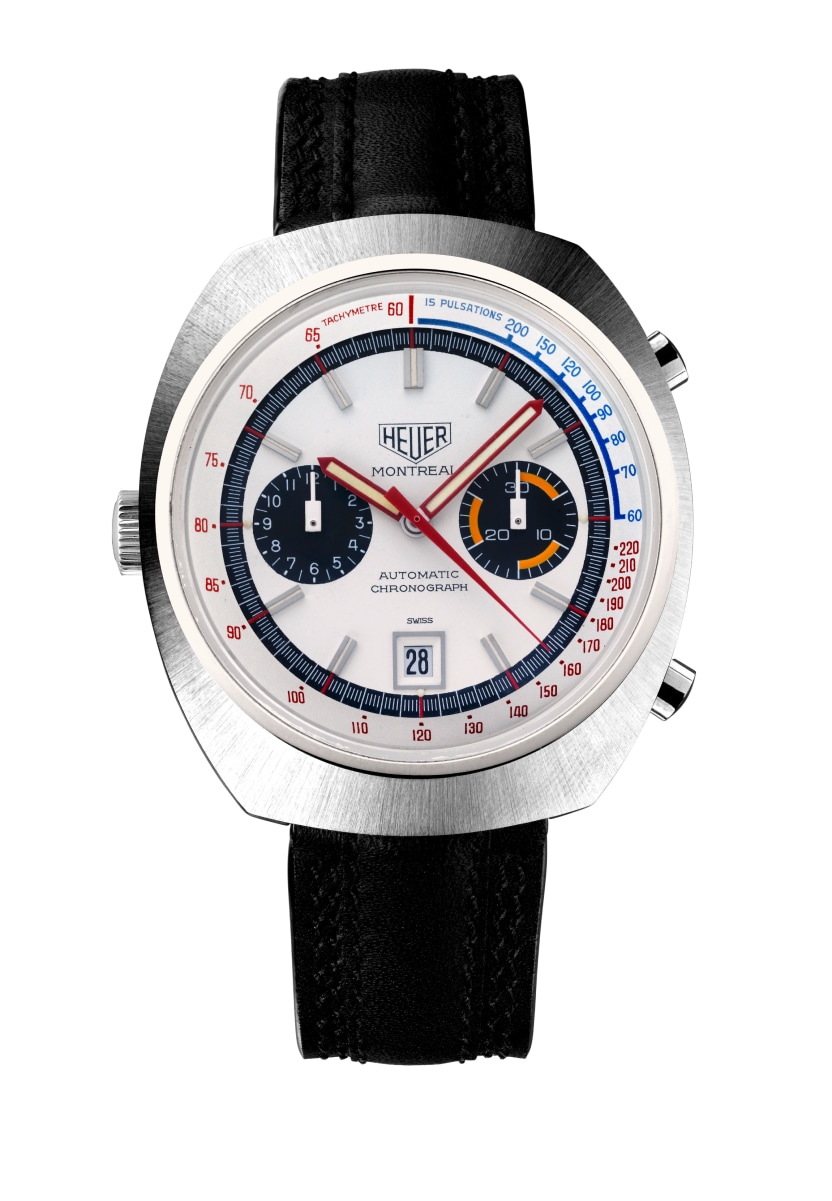
The Calibre 12-powered Montreal was in the Heuer catalogue for only four years before it was replaced by the Valjoux 7750-powered Montreal,with this second series of Montreal chronographs incorporating more conventional case geometry and monochromatic black or deep blue dials.
While the Montreal name would continue until 1983, those first four years, with the Calibre 12 chronographs, saw the launch of the most interesting.
CASE
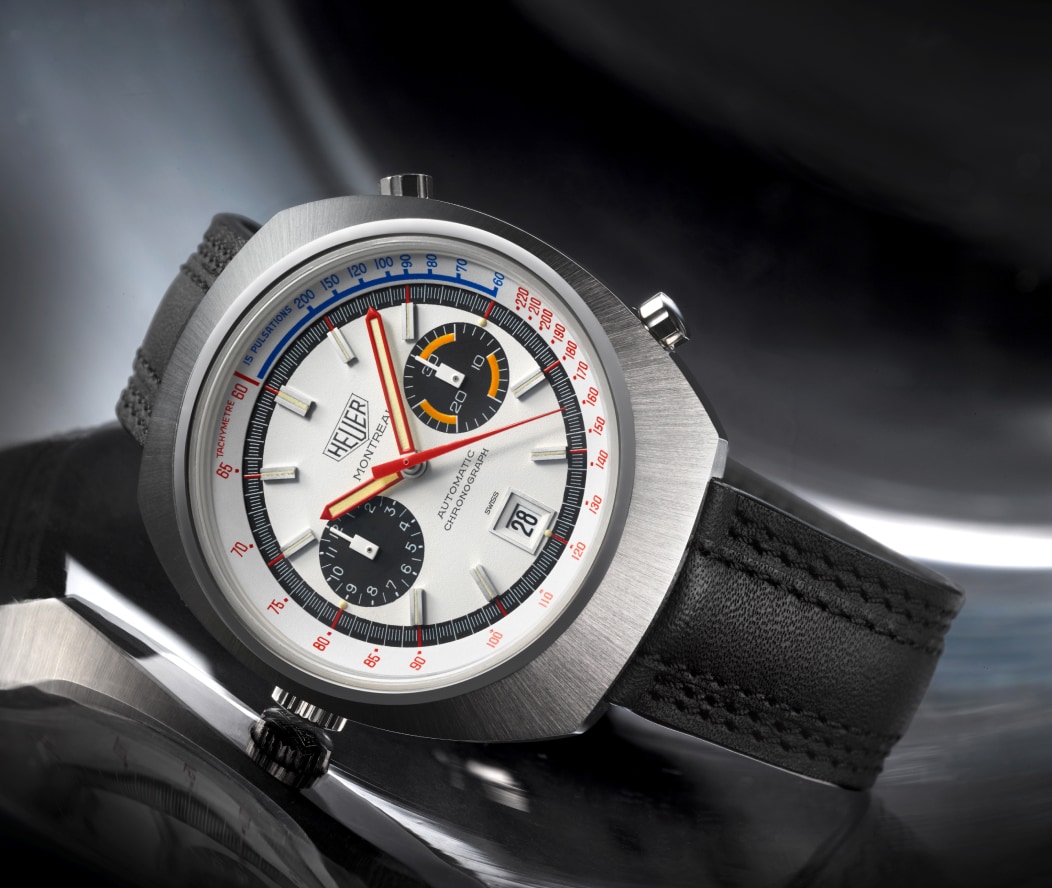
The case is one of the key features that makes the Montreal so special. It’s over-sized for the era at 42mm with a combination of a sunray, brushed stainless steel top section and polished surfaces along the side of the case.
Like all Calibre 11/12/14/15 models, the Montreal uses fluted pushers and has the crown on the left-hand side of the case. The polished ring around the outside of the crystal presents a striking contrast with the brushed steel surfaces.
DIAL

Like all chronographs powered by the Calibre 12 movement, the Montreal dial uses the traditional bi-compax layout, with chronograph minutes at 3 o’clock and chronograph hours at 9 o’clock. There is no running seconds hand on the watch, so if the chronograph is not running, there is no movement on the dial.
There are two scales offered on the internal bezel; a “Pulsations” scale, indicating a range of 60 to 200 beats per minute and a traditional tachymetre, indicating a range of 60 to 200 miles or kilometers per hour.
MONTREAL CALIBRE 12 SERIES

REFERENCE 110.503W
The White-dial Montreal is the most colourful of the range- Orange, Yellow, Red, Black and Blue all feature on the dial and somehow, despite the mass of colour, still manages to work well.
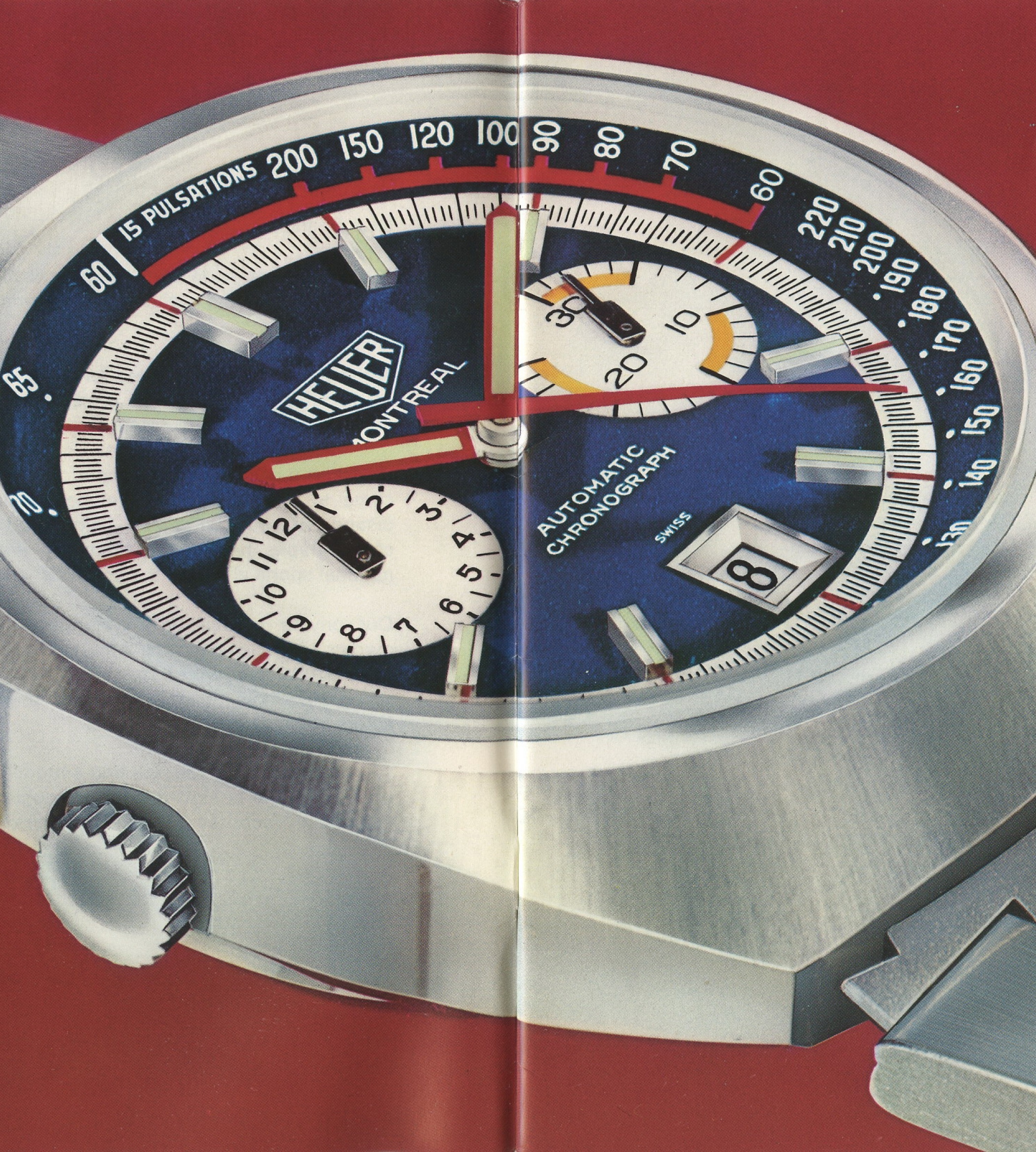
REFERENCE 110.503B
This is the first of the Blue-dial models, and is distinguished by the Yellow/ Orange ”racing stripes” on the chronograph minute recorder (indicating five-minute increments), the applied metal markers (filled with lume) and the white minute-marker ring.
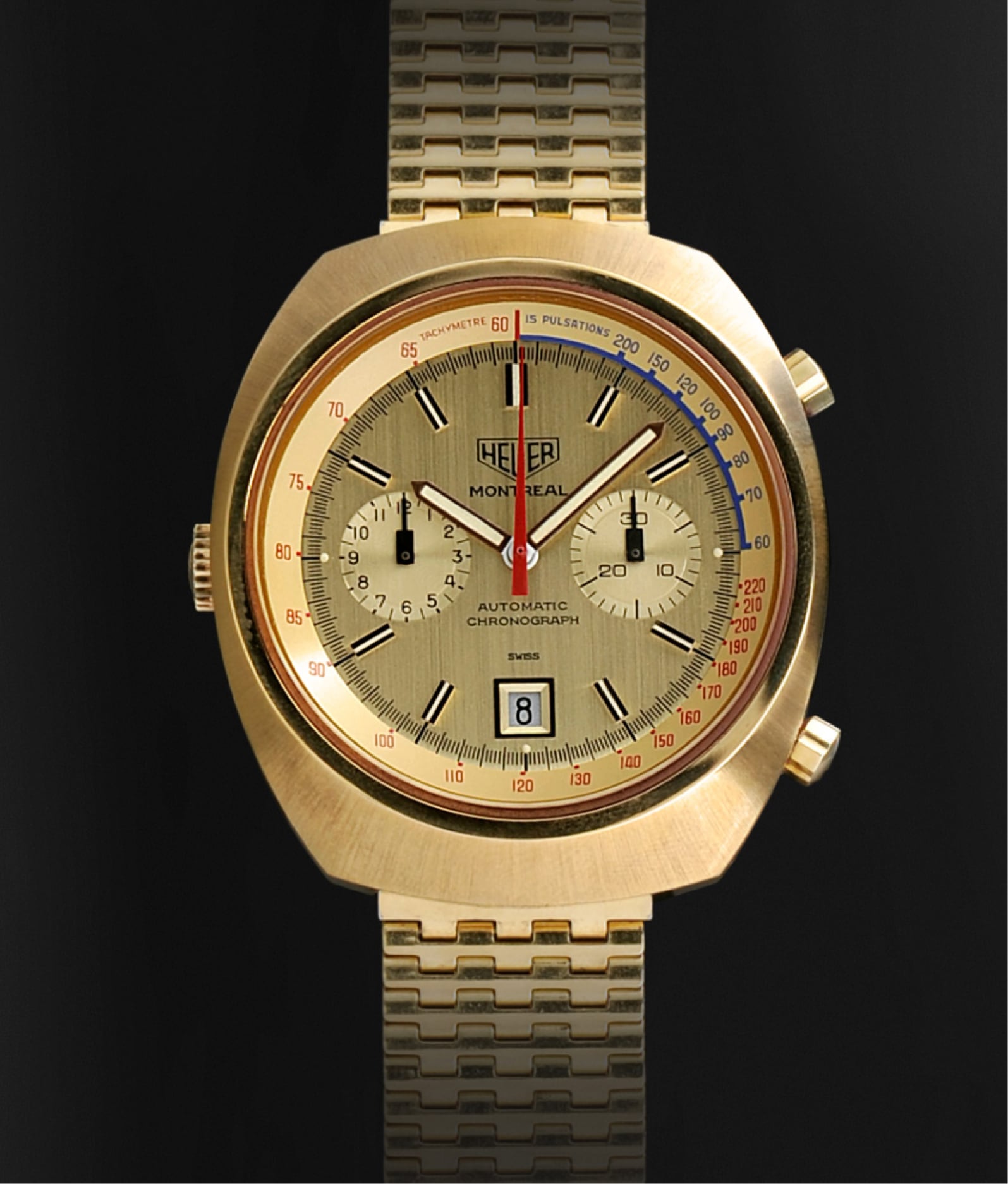
REFERENCE 110.505CH
Perhaps the most outrageous model in the Montreal range is the Gold-plated version, with matching “Champagne” dial. These were available with a gold-plated NSA “brick” bracelet, the same as the Monaco reference 1133.
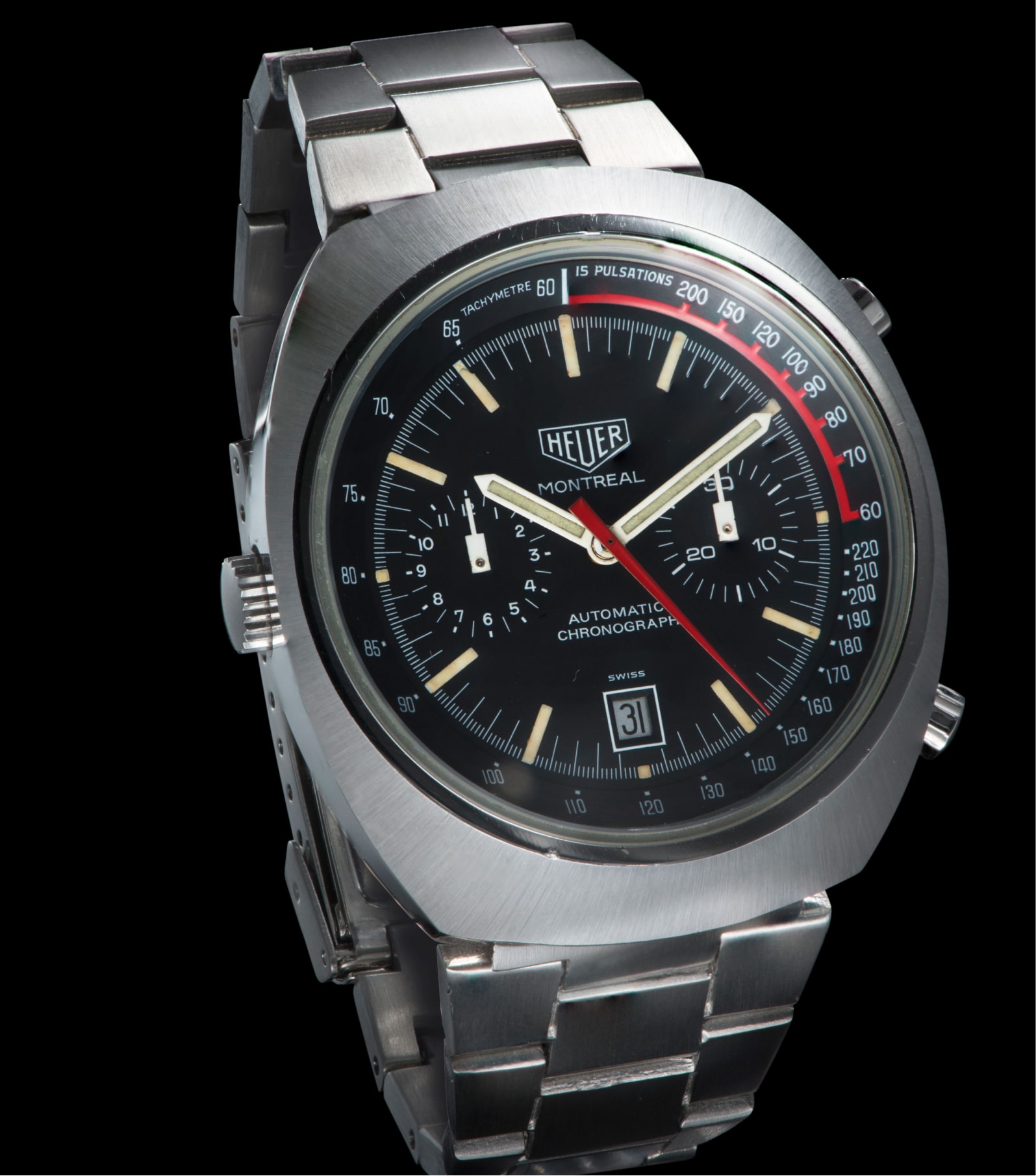
REFERENCE 110.503NC
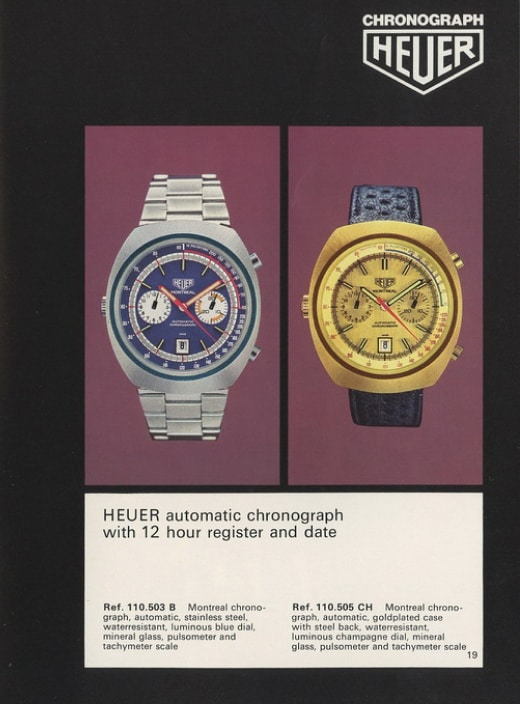
REFERENCE 110.503N
Also part of the original 1972 collection is this striking black dial, which shares its design with the white, gold and blue versions.
An additional two designs were launched in 1974 that differ slightly from the initial collection, both of which carry the “C” suffix in their reference numbers.
The second Blue Montreal, reference 110.503 BC, has an all-blue dial (with the white minute marker ring deleted from the previous execution) with contrasting white minute recorders and lume-strips marking out the hours. The ”racing stripes” on the chronograph minute recorder are red, rather than yellow/ orange.
The second of the black-dial models (reference 110.503 NC), has a more subdued design, with its all-black dial broken up only by the white hands and the Red Pulsations scale, along with lume-strips for the hour markers.
This watch and the model with the black-coated case are the only two models of the Montreal chronograph that have a white- rather than red- chronograph second hand.
The final version of the Montreal has a black-coated case. This version was introduced circa 1977, and along with versions of the Monza, Monaco and Carrera represented Heuer’s initial series of black-coated chronographs, capturing a popular style of the late 1970s. The crown and pushers of this model are stainless steel, rather than being coated.
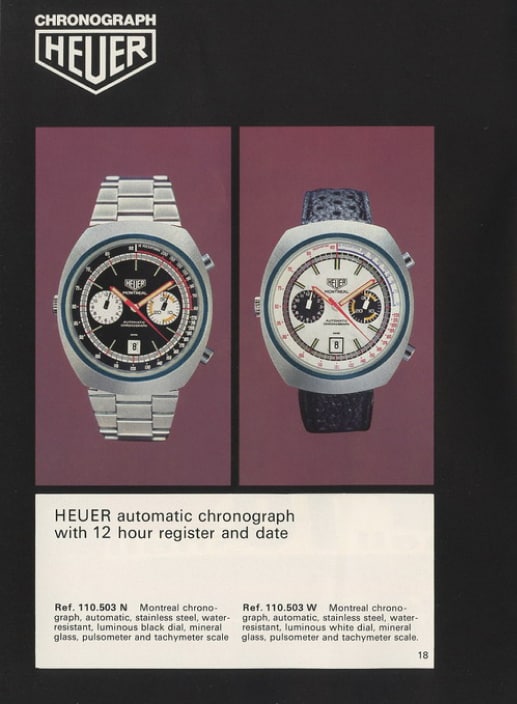
REFERENCE 110.503BC
BRACELETS
NSA made three bracelets for the Montreal, as follows:
• Gold plated “Brick” bracelet
• Flat link bracelet, also used on the Calculator
• “Peaked” link bracelet that you see above
While the Calibre 12 powered Montreal was phased out in 1976, a new version of the Montreal, powered by the Valjoux 7750 movement, was introduced in 1977. The case used for the Valjoux 7750 version of the Montreal continued certain styling cues from the predecessor model, specifically the convex geometry of the case, with the sunray, brushed top and the polished sides, but the case for the new Montreal was smaller and more conventional, measuring 41 millimeters in diameter and being tapered across the top and bottom. The wild dials of the early 1970s changed to subdued monochromatic dials, offered in either black or blue.
The hands, and dial are all-new, and with the use of the Valjoux 7750 movement, the crown is on the right-hand side of the case. The Valjoux 7750-powered Montreal remained in the Heuer range until 1982. In May 1980, the Valjoux 7750-powered Montreal became the first Heuer chronograph wristwatch worn in space, when cosmonauts Valeri Kubasov (Russia) and Bertalan Farkas (Hungary) wore these watches on the Soyuz 36 mission.



